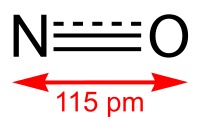
Photo from wikipedia
Two important methods for enhancing gas sensing performance are vacancy/defect and interlayer engineering. Tin sulfide (SnS2) has recently attracted much attention for sensing of the NO2 gas due to its… Click to show full abstract
Two important methods for enhancing gas sensing performance are vacancy/defect and interlayer engineering. Tin sulfide (SnS2) has recently attracted much attention for sensing of the NO2 gas due to its active surface sites and tunable electronic structure. Herein, SnS2 has been synthesized by the chemical vapor deposition (CVD) method followed by nitrogen plasma treatment with different exposure times for fast detection of NO2 molecules. Plasma treatment created a substantial number of surface vacancies on SnS2 flakes, which were controlled by the exposure period to modify the surface of flakes. After 12 min of nitrogen plasma treatment, SnS2 nanoflakes show considerable improvement in NO2 sensing characteristics, including a high sensing response of ∼264% toward 100 ppm NO2 at 120°C. The enhancement in the relative response of the sensor is due to the electronic interaction between NO2 molecules and the S vacancies on the surface of SnS2. Density functional theory (DFT) computations indicate that the S-vacancy defects on the surface dominate the effective NO2 detection and the NO2 adsorption mechanism transition from physisorption to chemisorption. Adsorption kinetics of the NO2 gas over SnS2 nanoflake-based chemiresistor sensors were studied using the Lee and Strano model [ Langmuir 2005, 21(11), 5192-5196]. The irreversible rate of the reaction for various NO2 concentrations exposed to the gas sensor is extracted using this model, which also appropriately describes the response curves. The forward rate constant of the irreversible gas sensor increased with the increase of the N2 plasma treatment time and reached the maximum in the 12 min plasma-treated sample. Through defect engineering, this research may open up new vistas for the design and synthesis of 2D materials with enhanced sensing properties.
Journal Title: ACS sensors
Year Published: 2023
Link to full text (if available)
Share on Social Media: Sign Up to like & get
recommendations!